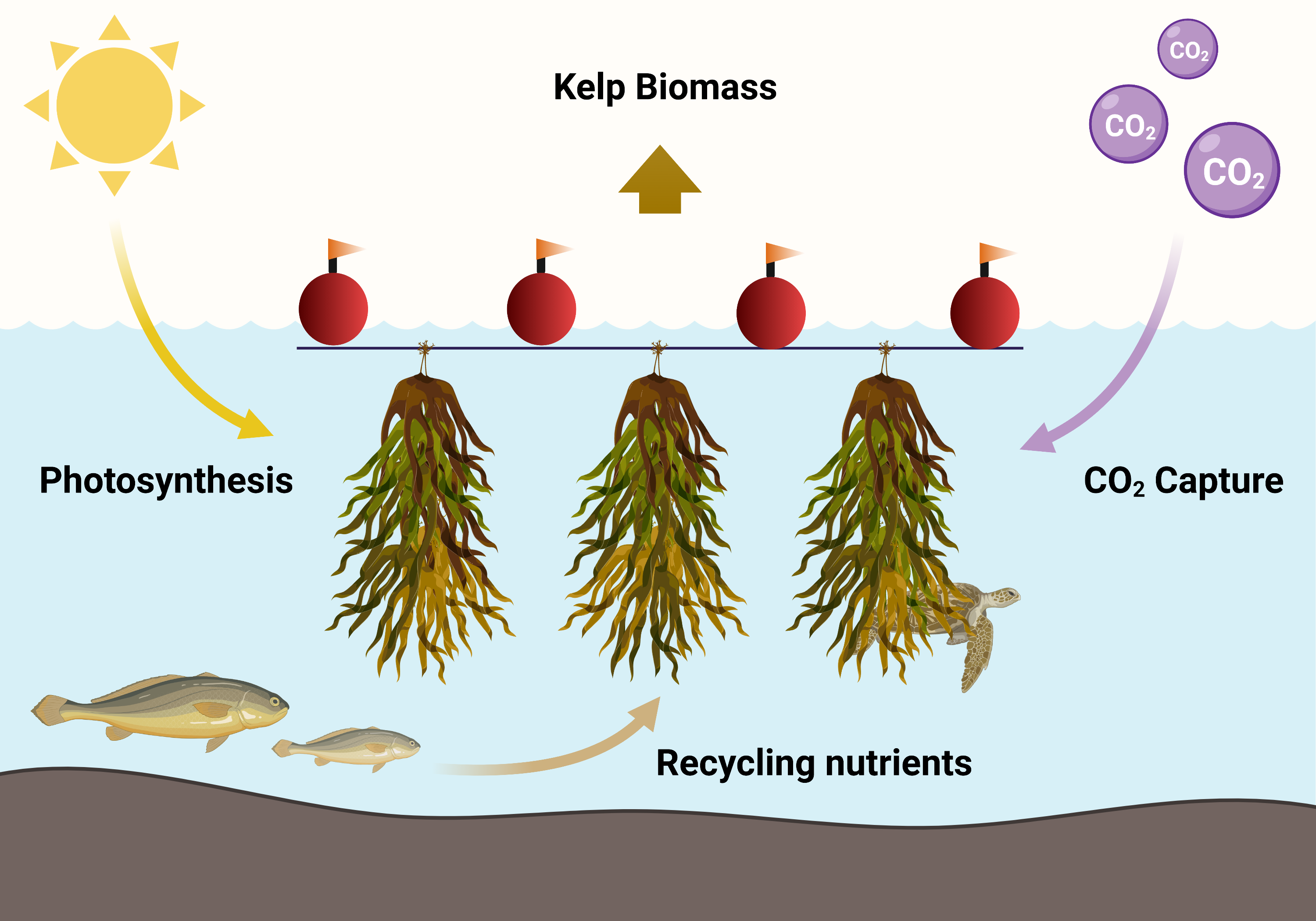*Crunch*
As I chew on the dried seaweed snack, it almost melts into my mouth, giving me a strong umami flavor that tastes vaguely of a mouthful of ocean water at the beach. I think it’s probably an acquired taste. But I didn’t hate it, so I’m giving this snack a 7/10: would eat again. And no, don’t worry — you didn’t accidentally click on a food blog. This is still the SWAC you know and love.
Although snacking on a piece of kelp is new to me, many Asian cultures already consider seaweed a staple of their cuisine, and have been practicing and perfecting kelp farming since the 17th century. (Kelp and seaweed refer to the same organism, a “macroalgae” that can grow over 250 feet in length.) However, kelp aquaculture seems to be moving its way West – partially due to increased demand, but mainly because more and more people are coming to appreciate its potential as one of the most sustainable crops on the planet.

I first heard about kelp farming on How to Save a Planet, where the hosts Dr. Ayana Elizabeth Johnson and Alex Blumberg interviewed ex-fisherman and kelp farmer Bren Smith (highly recommended listen). Smith frames his career shift from fishing to kelp farming through the lens of sustainability. In its current state, fishing our oceans is highly unsustainable (a message gruesomely portrayed in the Netflix documentary Seaspiracy). At its core, sustainability refers to practices that can be maintained at a certain rate without damage or depletion of resources. Smith says that while some ocean-based harvesting practices are unsustainable in their current form, kelp farming done correctly can actually benefit maritime ecosystems.
How exactly can kelp succeed when so many of our land-based crops fail the sustainability test? First of all, no arable land is required for kelp growth – just a rocky shoreline, preferably in the chillier waters of New England, the Northwest, and Alaska. Secondly, the cultivation of kelp requires no fertilizer, a major source of land pollution from agriculture. Thirdly, kelp farming in some instances can help to protect natural features of the coastline, including coral reefs, by increasing biodiversity and protecting coastline regions from the open ocean and pollution. If you need a cuter example, even otters utilize kelp in their environments, hooking their babies onto the large stalks while they go hunt for food.
Kelp can also be easily incorporated into an integrated multi-aquaculture system, where the kelp serves as a habitat for farmed shellfish or farmed fish, all of which can be harvested from the system. The presence of multiple trophic levels of species helps to filter nitrogen and phosphorous wastes to make the system both more productive and more eco-friendly. The kelp itself is a carbon sink, meaning that the carbon that makes up the algae comes from carbon dioxide in the ocean. Removal of acidic carbon dioxide from the ocean has the potential to combat ocean acidity. To drive home how important kelp could be in improving our planet, scientists found that covering only 9% of the ocean floor in kelp could produce enough biomethane (a biofuel) to completely replace our need for fossil fuels and sequester enough carbon from the atmosphere to reduce CO2 to pre-industrial levels.
Finally, kelp doesn’t just become seaweed chips. Kelp farmers like Bren Smith envision a future where kelp can replace crops like soy as a “base” for a multitude of products that we use every day. Kelp can be used to make natural fertilizer, to make biofuels, hygiene products, and pharmaceuticals.

Kelp isn’t a major part of the Western diet, but at one point, cool ranch Doritos weren’t either. Keep an eye out for seaweed in the unlikeliest of places as sustainable aquaculture grows– it’s one market that’s not likely to go underwater.
Peer edited by Irene Chiang